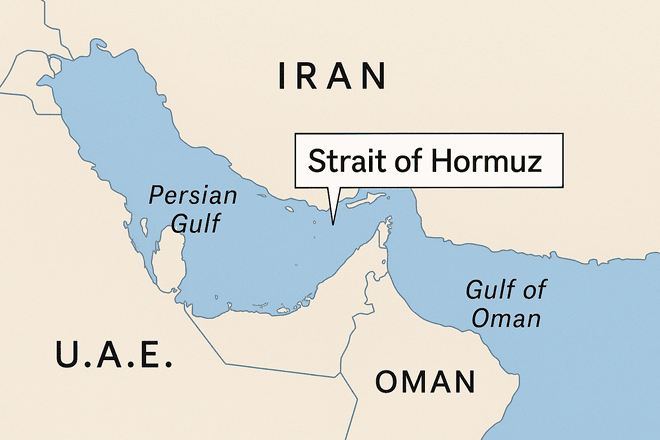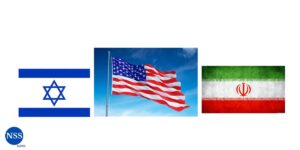
The narrow waterway is vital to global energy markets — and a potential battlefield if tensions escalate.
What Happened?
As tensions flare in the aftermath of U.S. strikes on Iranian nuclear facilities, military officials and analysts are warning that Iran may retaliate by attempting to close the Strait of Hormuz — a critical maritime chokepoint through which a quarter of the world’s oil and 20% of liquefied natural gas flow.
In high-level White House meetings, U.S. military leaders have flagged the potential threat of Iranian naval mines in the strait. American forces are reportedly repositioning assets in the region to prepare for a possible escalation.
Why It Matters
Any disruption in the Strait of Hormuz would ripple through the global economy. Energy prices could spike dramatically, and U.S. naval forces — including minesweepers and warships — could be exposed to Iranian attacks in confined waters. A closure would not only hit Western economies but severely affect Asian energy markets, which rely heavily on oil and gas from the Gulf.
Where Is the Strait of Hormuz?
The strait is a 90-mile narrow passage connecting the Persian Gulf to the Gulf of Oman and the Arabian Sea, bordered by Iran to the north and Oman and the UAE to the south. At its narrowest, it is only 21 miles wide — easily blockable by naval mines or armed confrontation.
Who’s Involved (Key Stakeholders):
- Iran: Controls the northern shoreline; its navy has the capability to mine the strait and deploy fast-attack boats or submarines.
- United States: Maintains a significant naval presence in the Persian Gulf; responsible for protecting freedom of navigation.
- Qatar, UAE, Saudi Arabia, Kuwait: Major Gulf energy exporters whose economies depend on access to the strait.
- Asia (China, Japan, South Korea, India): Top importers of Gulf oil and gas; vulnerable to supply disruptions.
- Global Markets: Any conflict in the strait would cause financial volatility and spikes in global fuel costs.
Related Developments
- U.S. struck three Iranian nuclear facilities last weekend
- Iran vowed “forceful retaliation” and has since launched missiles at U.S. bases
- Israeli-Iran conflict is intensifying, adding pressure on regional stability
- Iran’s Supreme National Security Council has discussed naval responses
Strategic Risks
While mining the strait could severely impact global shipping, it would also cut off Iran’s own oil exports, dealing a blow to its already-sanctioned economy. Analysts warn that such a move would be self-destructive, though still possible if Iran chooses a high-cost strategy to assert strength.
“Many of Iran’s options are the strategic equivalent of a suicide bombing,” said Karim Sadjadpour of the Carnegie Endowment.
“They can do enormous damage… but may not survive the blowback.”
What Comes Next
U.S. Navy officials are reportedly repositioning ships to reduce vulnerability in case Iran chooses to act. Intelligence and defense analysts believe Iran may be weighing options between symbolic retaliation and strategic escalation, including cyberattacks, proxy strikes, or mining operations.
Should the strait be mined, the U.S. would likely launch a prolonged mine-clearing operation, risking American lives and drawing global attention.







